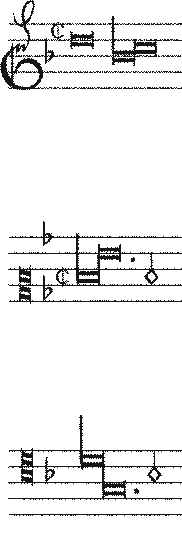La plus mignonne de mon cueur 3v · Anonymous
Appearance in the group of related chansonniers:
*Copenhagen f. 27 »La plus« 2v [3v] (Only T and C) · Edition · Facsimile
*Dijon ff. 105v-106 »La plus mignonne de mon cueur« 3v · Edition · Facsimile
Other musical sources:
Bologna Q16 ff. 83v-84 »La plus mignonne de mon ceur« 3v · Facsimile (Q016_172)
This page with editions as a PDF
Edition: Jeppesen 1927 no. 22 (Copenhagen).
Text: Rondeau quatrain; full text in Dijon, and in Du Fay’s setting in Nivelle and Wolfenbüttel; also found in Berlin 78.B.17 f. 97v (no. 202), ed.: Löpelmann 1923, p. 156, London 380 f. 246, Jardin 1501 f. 67 (no. 59). After Dijon:
La plus mignonne de mon cueur, Des bonnes estes la milleur, la plus mignonne de mon cueur, Quant j’ay desplaisir ou douleur La plus mignonne de mon cueur, |
Most darling of my heart, Of the good you are the best, most darling of my heart, When I feel grief or pain Most darling of my heart, |
This poem is also in Nivelle and Wolfenbúttel in the setting by Guillaume Du Fay.
Evaluation of the sources:
This is probably the least successful entry the Dijon scribe made in the Copenhagen chansonnier. Otherwise the general impression is that this MS contains a carefully selected repertory and that the scribe here lets his practical experience of the music influence his judgment of what to put on the pages. In this case he probably had no idea what went on in the music. If we may assume that the missing upper voice in Copenhagen was identical to the corresponding voice in Dijon – as the tenor and contratenor both are – he produced two nearly faultless copies of an exemplar, and it is very likely that he did them on the same day. He probably did not know the music and he obviously did not try to imagine the voices as a sound picture. As it stands in the Dijon chansonnier the chanson is not performable. Some of the errors, which most probable stem from his exemplar, is indeed easy to detect, while others only can be sorted out by referring to the version in the Italian manuscript dated 1487, Bologna, Civico Museo Bibliografico Musicale, Ms. Q16.
Among the easy detectable errors are the wrong clefs in the contratenor parts of both Copenhagen and Dijon. One quickly realizes that it should be F-clefs instead of C-clefs, but the scribe carefully copied them including the adjustment of the lower flat to its correct position according to the C-clef.
If we disregard the wrong clef, the chanson is still in places quite dissonant or incompetent in the MSS (see for example bb. 4, 16-17, 24-25, or 31). It seems impossible that the scribe ever judged the voice parts together. Or, if he did, it was too late to do anything about it. A repair would demand a lot of work, and the music probably was not worth the effort.
One begins to get a suspicion that this chanson was not what the scribe really wanted to add to his two collections of chansons. Maybe his target more likely was Du Fay’s charming setting of the same poem, which is found in the Nivelle and Wolfenbüttel chansonniers. The text may have caught his eye, and as a result the song was incorporated in the two collections so to say unheard, but accurately and professionally copied from the exemplar on hand.
Comments on text and music:
In comparison to Du Fay’s setting of the same slight, but rather alluring love poem in rich, nearly équivoques rimes, this rondeau is unattractive and boring. It is quite old-fashioned with octave imitations in the superius-tenor duet as the contrasting element in the second part of the rondeau (bb. 20 ff). As a two-part composition this duet is tolerable (the passages bb. 12-14 or 36-39 could be made to work better in this format), but with the contratenor added the composition is close on inept. The contratenor alternates between a position below and above the tenor and it is characterised by leaps and aimless movement with clumsily disguised parallel fifths and octaves (bb. 5-6 or 36-37).
In fact, the most interesting thing about this chanson is the question of how it got to be corrupted in the Dijon scribe’s exemplar. It could be a candidate for a piece, which started life in writing without letter clefs, as one of the rare pieces in so-called ‘clefless’ notation (see further ‘On chansons notated in fa-clefs’). If we look at the version in the Bologna MS, which unlike the Copenhagen/Dijon version can be performed, it is easy to imagine how the music could present itself in ‘clefless’ notation (figure 1) with a lot of b-flats as fa-signs. This does not indicate a performance at any fixed pitch as long as the structure demanded by the fa-signs is maintained, but the structure can be read in different ways by imagining letter clefs.
Figure 1 |
Figure 2 |
Figure 3 |
(Figure 4) |
An obvious choice is shown in the next set of incipits (figure 2), and this is exactly as it appears in Bologna Q16, but it could just as well be perceived as in the third figure, a fifth higher with only one flat. The corrupt version in Copenhagen/Dijon could simply be a conflation of the two readings, but of course this does not account for all the other errors. Obviously it can also be read without any flats in the signature (figure 4), but this produces an extremely low pitch.
PWCH May 2009



